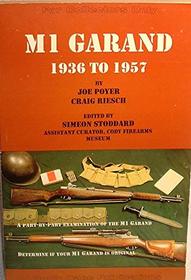Search -
The M1 Garand 1936-1957 (For collectors only)
The M1 Garand 19361957 - For collectors only
Author:
New, 4th Edition, revised and expanded with new serial number information, parts descriptions, and photos. The M1 Garand was the battle rifle issued to American forces during World War II and the Korean War. It was the first semiautomatic rifle design to be used by combat forces in any army of the world. Developed in the 1930s, it was standar... more »
Author:
New, 4th Edition, revised and expanded with new serial number information, parts descriptions, and photos. The M1 Garand was the battle rifle issued to American forces during World War II and the Korean War. It was the first semiautomatic rifle design to be used by combat forces in any army of the world. Developed in the 1930s, it was standar... more »
ISBN-13: 9781882391080
ISBN-10: 188239108X
Pages: 216
Edition: 3rd Edition
Rating: ?
ISBN-10: 188239108X
Pages: 216
Edition: 3rd Edition
Rating: ?
0 stars, based on 0 rating
Genres:




